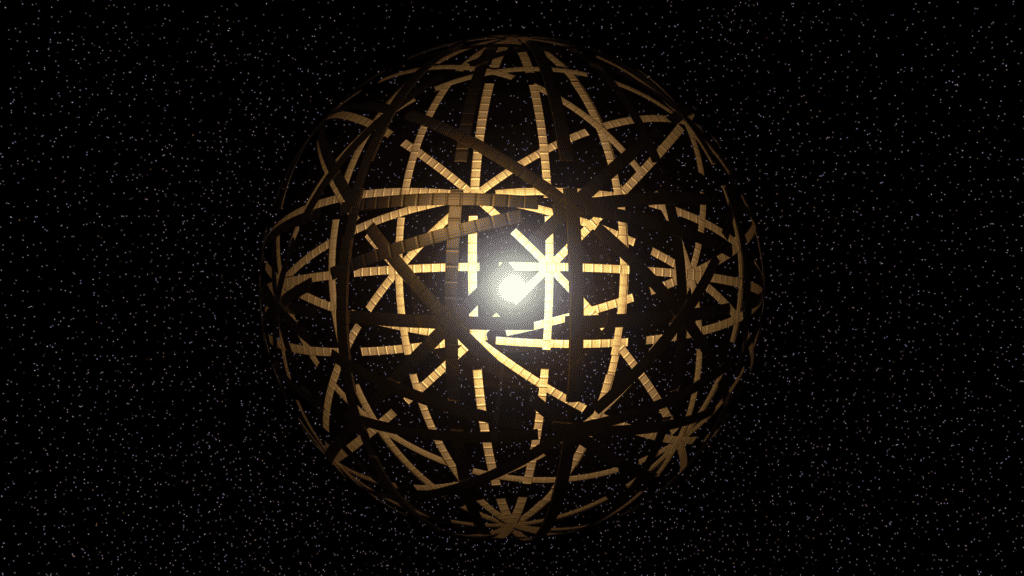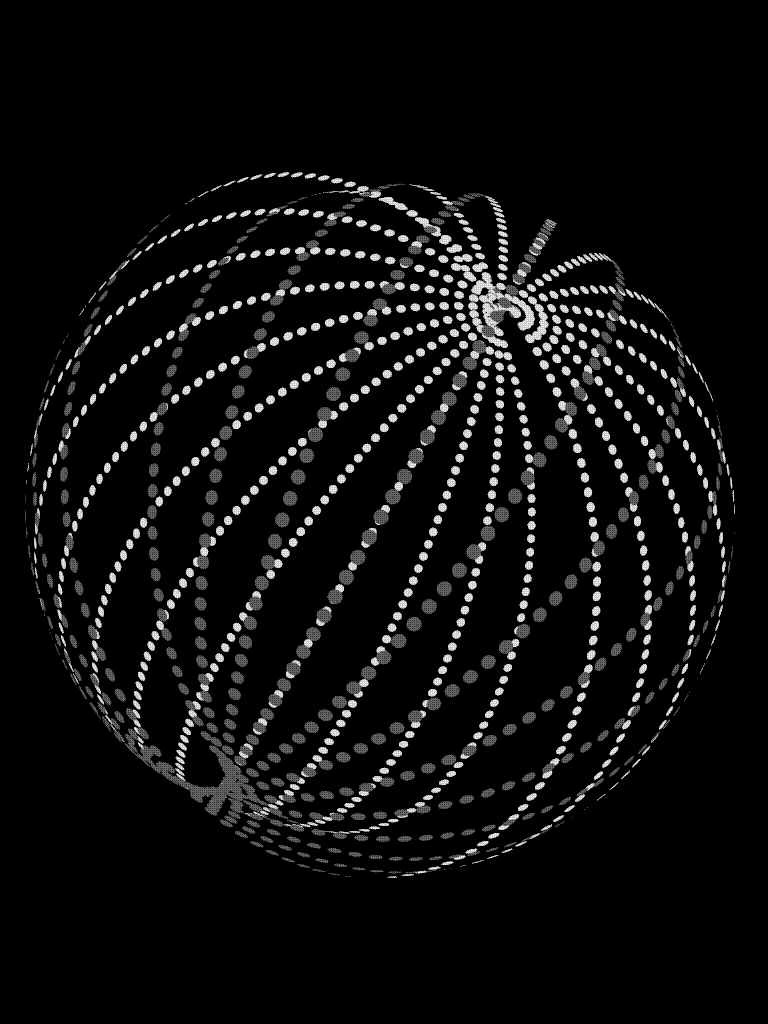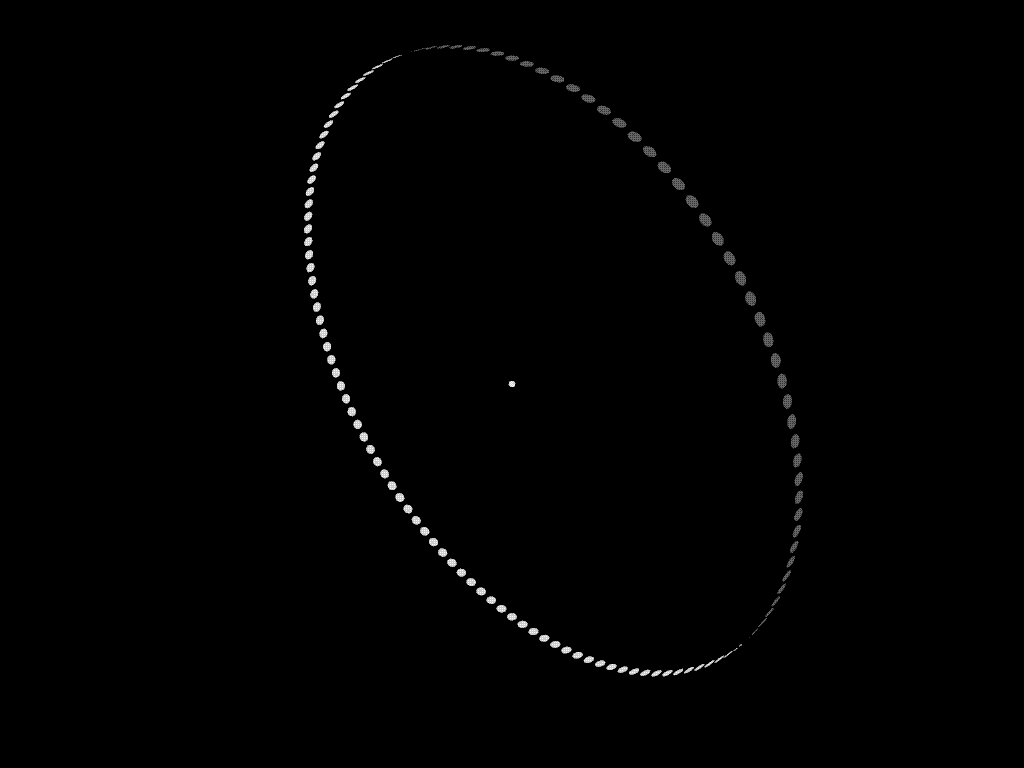A Dyson sphere would be a structure built around a star to capture much of the star’s energy and use it for its own purposes — kind of like a giant solar panel around the star. Such a structure could not only solve mankind’s energy demands for the foreseeable future but enable us to explore much more of the solar system than we even imagined. The only problem is, we have no idea how to build such a thing.

Whatever a civilization does things, it needs energy. The more advanced the things, the more energy it needs. At first, humans managed with the energy from their own bodies. Then, they started using animals’ energy for plowing fields and transportation. As time went by, humans learned to harvest other sources of energy, with things like windmills and watermills, and this was the state of affairs until recently in our history.
As the Industrial Revolution kicked off, our civilization also realized how to use fossil fuels like coal or oil. Then, less than a century ago, nuclear and renewable energy sources entered the stage.
But what happens if you want to do even grander things, and you need even more energy? What happens if you’d want to do things like explore (or even colonize) other planets, or mine the entire solar system? You couldn’t really do that using oil or coal. Researchers theorize that a civilization wanting to do could this draw energy from something like a Dyson sphere.
Not such a crazy idea
Using the Sun’s energy is far from a new idea. Practically all life on our planet uses the sun’s energy in one form or another. But humans have taken it to the next level in recent years, by using solar panels to heat water or produce energy.
The problem is that solar panels only absorb a small portion of the Sun’s energy. Most of this energy is lost and dissipated in the atmosphere, and the surface we can cover with solar panels on our planet is relatively small. Presumably, as our civilization continues to evolve (assuming we don’t self-destruct or destroy the planet’s environment), we would use more and more renewable energy — and solar in particular.
So building a Dyson sphere would then only be the next step on this energy ladder; a way to take things to the next level and get our solar energy straight from the source.
Our energy production (and expenditure) has surged drastically in the past few decades, and will presumably continue to do so.
If you’d need more energy than what your planet can produce (and we’re not even close to that stage yet), it seems somewhat logical to try and build a structure like this. Developing a Dyson sphere would allow a civilization to harvest massive amounts of energy and power immense computation algorithms or carry out whatever other activities it may desire.
Like coal in the Industrial Revolution, a Dyson sphere would essentially enable a civilization to reach a different level of evolution and power up a whole new set of activities. But also like coal (or more recently, solar panels), it also requires a certain level of technology.
From sci-fi to science

Of course, we’ve never ever seen a Dyson sphere. Inspiration for it actually came from science fiction.
The first time such a structure was ever proposed was in 1937, when British philosopher and science fiction writer Olaf Stapledon describes it in his Star Maker novel, which walks the reader through a brief history of the universe. Stapledon described “light traps” that civilizations much older than our own would use to capture energy.
“Every solar system… surrounded by a gauze of light-traps, which focused the escaping solar energy for intelligent use,” he wrote.
Stapledon’s work is regarded as one of the “bibles” in sci-fi writing, but there could be more than just good art here. In 1960, physicist and mathematician Freeman Dyson published a two-page paper in the journal Science. The paper, far from being Dyson’s most valuable scientific work, would go on to become one of his most popular papers.
Dyson wanted to show that the idea is not absurd, and could be done within around 3,000 years. While his estimates are very rough and offer a ballpark idea more than anything else, it offered support for the idea. Dyson estimated that once escalating energy requirements reach a certain threshold, megastructures like this could be useful. Furthermore, Dyson also speculated that the existence of such structures could help us discover intelligent, advanced species in the galaxy.
“Taking our own solar system as the model, we shall reach at least a possible picture of what may be expected to happen elsewhere. I do not argue that this is what will happen in our system; I only say that this is what may have happened in other systems.”
Is it doable?
Probably yes, there doesn’t seem to be any fundamental reason why it couldn’t be built. You could argue that once a civilization reaches the technology level needed to build one it may not need one, but that’s a different discussion.
But it depends on what type of sphere you opt for.
There are several types of Dyson spheres. A full-scale shell that completely covers the Sun would probably be the most complex and impractical type of design. You’d have the entire structure pulled gravitationally by the Sun, and any flaw could cascade into a myriad problems; it would be an engineering nightmare.
In fact, Dyson himself never envisioned a full-scale sphere.
“A solid shell or ring surrounding a star is mechanically impossible. The form of ‘biosphere’ which I envisaged consists of a loose collection or swarm of objects traveling on independent orbits around the star,” Dyson explained, in reaction to comments on his paper.
That swarm of objects would orbit the star, not covering it entirely. This vision of Dyson’s is also shared by most futurists.
A “Dyson swarm”, for instance, would consist of independent structures orbiting the star. These could involve power generation as well as inhabitant spaces, and would offer several advantages. All in all, a Dyson swarm seems much more promising than a full-scale shell.

For starters, you could build it incrementally (you don’t need to have it all in one go), and the first structures that you build could also serve as a base for the next ones. Transferring energy from one structure to another would also be easier than transmitting it back to the Earth.
This structure also offers the advantage of not completely obstructing the star; in fact, the obstruction could be negligible for someone on the Earth.
The problem is that since the structures would be orbiting around the star, they would periodically eclipse each other when their paths overlap. Even more problematic is the risk of collision between the structures — something which would need to be periodically monitored. The original setup would need to be very carefully calculated to ensure no interruptions, and as more and more elements are added, disruptions could come up.
The simplest version of this would be a Dyson ring (picture below).

A Dyson ring would only harvest some of the Sun’s energy, but it would be much simpler than covering the entire 3D surface.
Some of the problems associated with a Dyson swarm could be overcome if instead of a swarm, a different structure called a Dyson bubble were to be deployed. Instead of using structures that would orbit around the star, a Dyson bubble would use statites — a hypothetical type of satellite that uses light sails (a type of propulsion using radiation pressure exerted by sunlight on large mirrors) to counteract the gravitational pull exerted by the star.

However, we have no idea what type of material could be even used to build this type of material, or how you’d deploy it. If this approach is indeed feasible (something which isn’t even clear at this point), it would require more advanced technology than what we have now.
Other types of approaches have also been proposed. Among them, a Dyson net would use cables strung around the star to draw power, while a stellar engine would use the Sun’s power for a specific task, such as space travel or computation (in something called a Matrioshka brain).
Another idea some scientists have toyed with is gathering energy from a black hole instead of a star. This offers some advantages (a black hole is smaller and you could harvest more types of energy from it), but also raises multiple challenges. First of all, you’d have to build it farther from your solar system, and keep careful watch for unexpected bursts of energy that sometimes happen around a black hole.
If all this sounds a bit sci-fi… well, it kind of is, at least for now.
Could we do it now?
No. Not even close, we don’t have the proper tools or the proper materials to work with. We don’t even know how we would transmit the energy back to Earth — and this would be the least of our concerns.
If we ever wanted to build something like this, it would likely involve more than one extraterrestrial colony first. According to Stuart Armstrong, a researcher at Oxford University’s Future of Humanity Institute who has studied megastructure concepts, we’d first start by mining Mercury for its iron and oxygen. These elements would be crucial for building mirrors to harvest the energy, and we’d need so much of them we’d tear much of Mercury apart; we could even end up tearing the entire planet apart. If we were to have the technology for it, Armstrong estimates that this mining phase could be done in as little as 40 years. But that’s just the start of it.
We’d probably not get enough from Mercury, and not wanting to destroy our own Earth, we’d probably also require minerals from Venus. Armed with what we got from Mercury, we’d be able to do this in just a year or two.
With Mercury basically gone and Venus in shambles, we’d finally be able to build our Dyson sphere: small at first, and then bigger and bigger. If we’ve gone this far, we may as well go crazy and also build living habitats in and/or around the sphere. We could build different types of habitats or whatever we’d want — theoretically.
Looking for Dyson spheres
Of course, we’re not even close to being able to do all that. We don’t even know if there’s a better alternative (nuclear fusion seems much more likely at this point), so we shouldn’t count on a Dyson sphere to help us in the future — even if this ends up being the case, it’ll probably be way down the line, and we’d be better off focusing on our planet rather than thinking of what to do outside of it.
Would a potential alien species, way more advanced than us, be building a Dyson sphere? It’s possible, but it’s not a given. But we can look for them.
If a Dyson sphere were to exist around some star we can observe, it would produce an observable dimming in the star’s light (regardless of whether it’s a swarm or a bubble). The absorption and transmission of energy would also produce radiation we may be able to observe. So if a human-like civilization built a Dyson sphere around a Sun-like star, there’s a chance we could pick this up.
SETI is incorporating this into its search for extraterrestrial life — and they’re not the only ones paying attention. The US Fermi National Accelerator Laboratory (Fermilab) has discovered over a dozen potential signals, but this is still very speculative. In 2015, an anomalous signal spurred questions of a potential Dyson sphere, although later data showed that an alien megastructure is very unlikely.
We don’t know if humans (or any other civilization for that matter) will ever be able to build a Dyson sphere. We don’t even know if such a thing is desirable. But it’s one of those things that seems just plausible enough to grab our imagination and make us think of what will be possible in the future — and every once in a while, a new study comes up that fuels our imagination.
We should prioritize the energy we can cleanly harvest right here on Earth, but in the meantime, it can’t hurt to keep an eye out and see whether we spot anything like a Dyson sphere.


